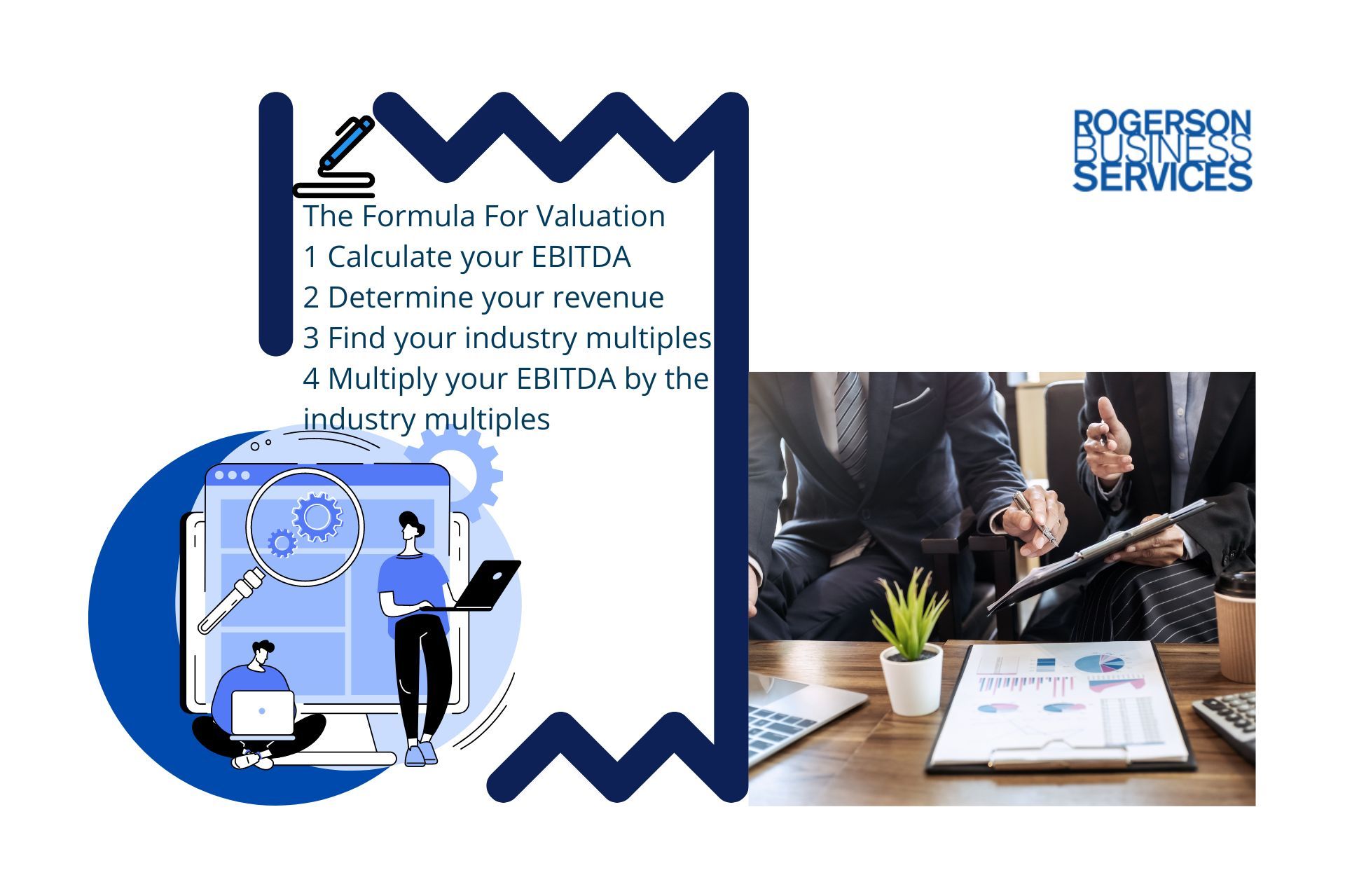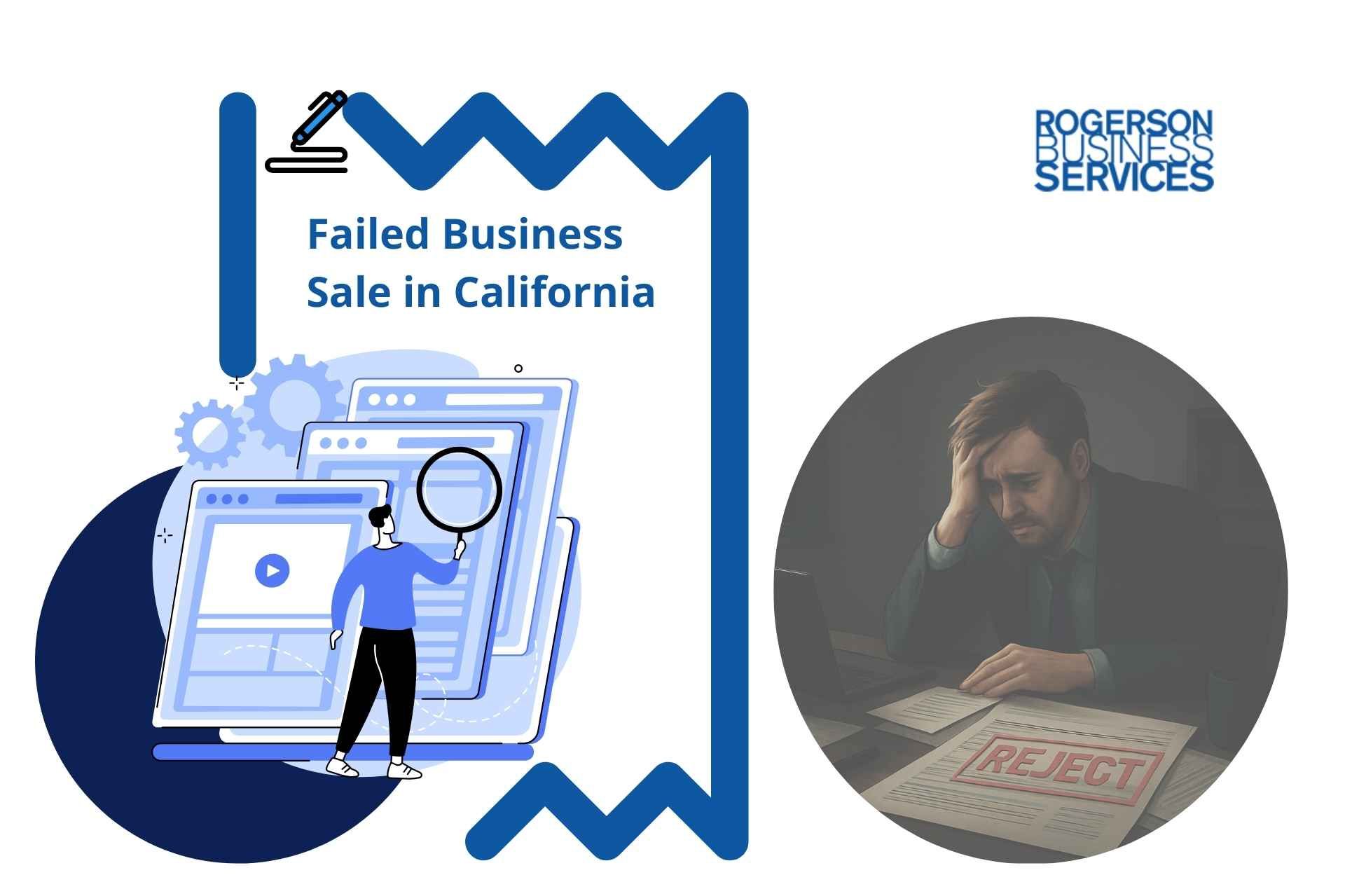Business Valuation Formulas
Using Formulas for Company Valuation Explained
When it comes to the science of
business valuation, you must be prepared to use business formulas, such as:
- Asset approach formula
- Discount cash flow analysis
- Other business valuation methods
The business assets approach or business equity value formula is likely the most commonly used business valuation metric and is based on the business’s net tangible assets. It takes into consideration the business’s assets, liabilities, and owner’s equity.
This business valuation formula takes an enterprise value (net tangible assets minus liabilities) and divides it by the business’s owner’s equity. This business valuation metric is useful in determining the business’s value and making business decisions.

Current Value = (Asset Value) / (1 – Debt Ratio)
When it comes to determining the worth of a business, business owners often struggle with undervaluing or overvaluing their company.
To accurately ascertain a business's value efficiently, calculate its total liabilities and subtract that figure from the sum of all assets—the resulting number is known as book value.
This approach to calculating company worth takes into account both existing assets and any outstanding liabilities.
Example Asset Approach Calculations:
You own a business and you want to find its worth by calculating its assets or using the asset approach calculations.
You would begin by listing out all of your company’s assets, such as:
- cash,
- inventory,
- equipment,
- buildings,
- and accounts receivable.
Then you add up the total value of those assets and subtract any liabilities that are owed against them. The remaining figure is the business's book value—the amount that it's actually worth in terms of the assets it owns.
Let's say your total assets valued at $1 million
Let's say your total liabilities valued at $250 thousands
Current Value = ($1,000,000) / (1-.25)
The asset approach calculations are often used for smaller businesses that don't have a lot of capital investments or a long history of financial performance. This approach is best suited for companies that don’t produce a lot of revenue, but have many physical assets they can sell if needed.
Value = (Future Cash Flow x Discount Rate) / (1 + Discount Rate)^n
The discounted cash flow analysis is one of many business valuation methods. This business formula takes into consideration the business’s expected cash flows and discounts them to their present value. This business valuation formula is useful in determining the business’s value over a certain time.
The discounted cash flow calculation for a business is as follows:
Value = (Future Cash Flow x Discount Rate) / (1 + Discount Rate)^n
Future Cash Flow
= the estimated cash flow for the business at some point in the future.
Discount Rate
= the rate at which you expect to discount future cash flows back to the present.
n
= the number of years you expect to wait before receiving those cash flows.
By viewing the estimated future cash flows of a business, it is possible to arrive at an accurate assessment of its present worth.
Although this calculation may seem elementary, using it provides you with valuable insight into how much your business might be worth if you were to put it up for sale.
This method serves as a powerful foundation from which buyers can begin their negotiations and offers an invaluable resource when assessing the value of one's company.
Discover More About Sellers Discretionary Earnings (SDE) - Click here
Discover More About 5 Business Valuation Formulas - Click here
Discover More About 3 Income Approach Valuation Formula - Click here

(1 + r) ^ (t/2) – C
Precedent transaction value calculation =
r = the weighted average cost of capital (WACC).
t = the number of years until the sale.
C = the cash flow in the last year of the projection period.
If you want to estimate the value of your service business in the supply chain niche, look no further than precedent transaction value calculation. It is calculated by examining recent sales of similar businesses and industries located near yours. This way, you can determine an accurate valuation for your company!
This valuation technique is commonly used by venture capitalists, investment bankers, and private equity firms when they are assessing a potential acquisition. It's exceptionally beneficial for those who have access to data on similar businesses that have recently been sold, as well as those looking to invest in an unfamiliar industry. Valuing the company through this method will help provide reliable estimates of worth with greater confidence than before.
Business valuation formulas may not be the best fit for every company, so it's essential to consult with experts in this field. They can evaluate which business method provides a precise reflection of your organization’s worth and is suited for your particular circumstances. By doing so, you can arrive at an exact understanding of what your enterprise is truly valued at.
Now that you have a better understanding of business valuation and the business formulas used, it is time to make informed business decisions and maximize business value when selling your business in California.
By utilizing business valuation services, you can ensure that you get the best possible return for your business and maximize the sale, giving you the best chance to get the most out of the business.
It's time to unveil the top five calculations used to evaluate your business value! Are you ready, this is where it gets exciting.
-->>






